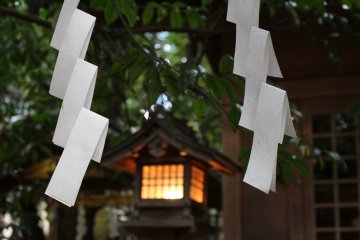
The Special Feeling at Osaki Hachimangu
Elena LisinaA visit to an old shrine during the evening can create a special feeling of peace and a relief from the daily worries of life. One such visit occurred at Osaki Hachimangu in Sendai.

Ōsaki Hachimangū is a Shinto shrine in Aoba-ku, Sendai, Miyagi, Japan. The main shrine building has been designated a National Treasure of Japan. [Wikipedia]

A visit to an old shrine during the evening can create a special feeling of peace and a relief from the daily worries of life. One such visit occurred at Osaki Hachimangu in Sendai.

One of the oldest and most recognizable buildings in Sendai, built in 1607 by the order of Date Masamune. This is the oldest Azuchi-Momoyama-style building left in Japan.
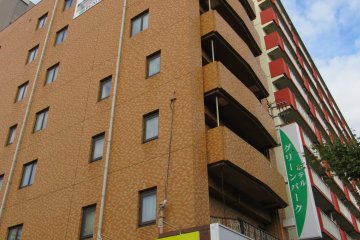
Hotel Green Park Sendai is attractive for the accommodation price, spacious rooms, good location and neighborhood. It’s convenient for a longer stay in Sendai.
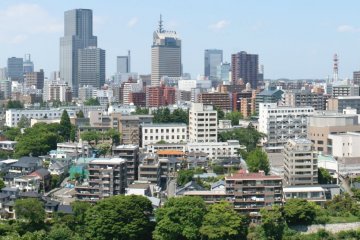
Ask any resident of Sendai about their city and they will tell you it is sumiyasui, meaning easy to live. This capital city of Miyagi Prefecture and the largest city in the Tohoku region is not too big, not too small, not too hot, and not too cold as you’ll often hear. You can enjoy every season in Sendai without the snowy winters of nearby Akita or Iwate, while also staying a bit cooler during the summer thanks to its location near the sea. The city is compact, making shopping and dining just a leisurely stroll downtown. At the same time, you can take a break from this modern mini metropolis of a million people for a weekend in the nearby mountains for trips to hot springs, skiing, or a round of golf in less than an hour by bus, train, or car. There are many reasons Sendai is an ‘’easy-to-live’’ city, but it is just as easy to travel to and enjoy. Sendai was founded by the powerful samurai feudal lord Date Masamune in the year 1600. Often called the ‘’One-eyed Dragon’’ by both his allies and enemies, his presence can still be felt throughout his old domain. Of particular interest is the site of the former mountain top castle overlooking the city, and his final resting place Zuihoden, a mausoleum showcasing rare Momoyama architecture. Today Sendai is just as well known for being the City of Trees. Thanks to beautification efforts encouraged by the local government, you’ll see green almost everywhere you look should you come spring or summer. Make sure to view Jozenji and Aoba Avenues which are lined with towering zelkova trees that change colors with the seasons and light up the night each December in a month long illumination. Those looking for a day or night out on the town will feel right at home in the capital. Within walking distance of JR Sendai Station is the region’s largest shopping arcade and Kokubuncho, the biggest entertainment district north of Tokyo. You’ll be in good company here as this academic city with its many universities has a sizeable student population. Looking for a bit more adventure? We have that too. How about a temple and shrine district centered on the picturesque Rinnoji Temple? Or check out our guardian on the hill Daikannon, one of the top ten tallest statues in the world! Don’t forget to sample the famous grilled beef tongue, seafood from Matsushima and Shiogama, or experience robata style cooking where it started. If festivals are more your thing, you’ll be pleased to know there a few during every season. Spring welcomes you with gorgeous cherry blossoms in several parks and the Aoba Festival takes you back in time to samurai parading in armor, floats heaved through the streets, and citizen groups performing the traditional sparrow dance. Meanwhile, athletes and spectators eagerly await Sendai’s 10,000 runner half marathon. Summer is the time to enjoy a cold drink on a hot night as several department store roofs are transformed into beer gardens. The highlight of the season though is of course Tanabata where colorful streamers decorate the streets and a 16,000 fireworks display awes you at Hirose River. In autumn the streets come alive with the sound of music during the Jozenji Street Jazz Festival. The massive festival literally highjacks the city with over forty stages and upwards of 650 bands—and it’s not just jazz music. The rhythm continues in October with dance troupes from around Tohoku and beyond in the Michinoku Yosakoi Festival. Winter in Sendai brings cold and some snow, but in addition to the Pageant of Starlight, you can see the half-naked (oh my!) pilgrimage of Dontosai. Sendai is the gateway to the entire Tohoku region. Take a bullet train or arrive via the Sendai airport, then let the adventure begin. Sendai’s central northern location allows easy day trips to Matsushima, one of the three most beautiful scenes in Japan, the mountain temple complex of Yamadera, and the Kyoto of the East Hiraizumi. With something for everyone, this could be the best part of Japan you never knew about. Come enjoy the north with us. Rediscover Japan with Sendai!


Bilingual cafe that gives you a delicious yet affordable taste of the UK. A personal favorite and choice for best British cafes in Japan.
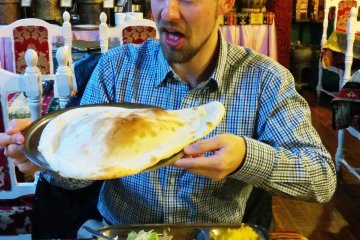
Zam Zam serves up Indian cuisine a few blocks away from the downtown Sendai area. They have a special evening time curry buffet that is affordable and delicious.

Join the latest Japanese food trend - pancakes! This specialized cafe offers both sweet and savory options, made with buttermilk for great texture and flavor.

Built in the 17th century during the Edo period, Zuihoden Mausoleum (瑞鳳殿, Zuihōden) in Sendai, Miyagi Prefecture is the resting place of Date Masamune who was a powerful daimyo and the founder of Sendai. The influential feudal lord ruled over the Sendai Domain from nearby Aoba Castle (Sendai Castle), which he constructed in the early 17th century. Date Masamune’s son and grandson, Date Tadamune and Date Tsunamune, are also entombed at the Zuihoden complex in nearby mausoleums (Kansenden and Zennoden respectively), while other descendants are buried in more simplistic tombs and graves. Although the original mausoleum was destroyed during World War II, it was later restored to its former grandeur, and today, Zuihoden is still a visually mesmerizing sight. The collection of tombs are decorated intricately with blue, green, red, and gold, giving Zuihoden an air of opulence characteristic of the Momoyama art style. The area is also populated by enormous cedar trees, which weave seamlessly through the sacred and tranquil grounds. Nearby Zuihoden’s main buildings is the Zuihoden Museum, which displays family artifacts from the Date clan, including weapons, documents, and even family bone fragments and hair.

Sendai Daikannon (仙台大観音), located inside Daikanmitsuji Temple, is a large statue of the gem-bearing Nyoirin Kannon form of Kannon, located in Sendai, Japan. It is the tallest statue of Nyoirin Kannon in the world, and the tallest statue of a goddess in Japan. As of 2018, it is the fifth tallest statue in the world at 100 metres. [Wikipedia, adapted]
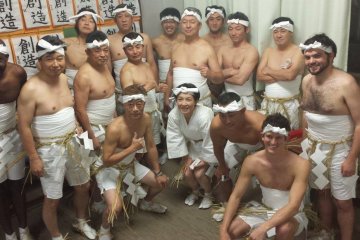
Enjoy a unique, authentic and naked Japanese experience at this centuries old festival in Sendai.